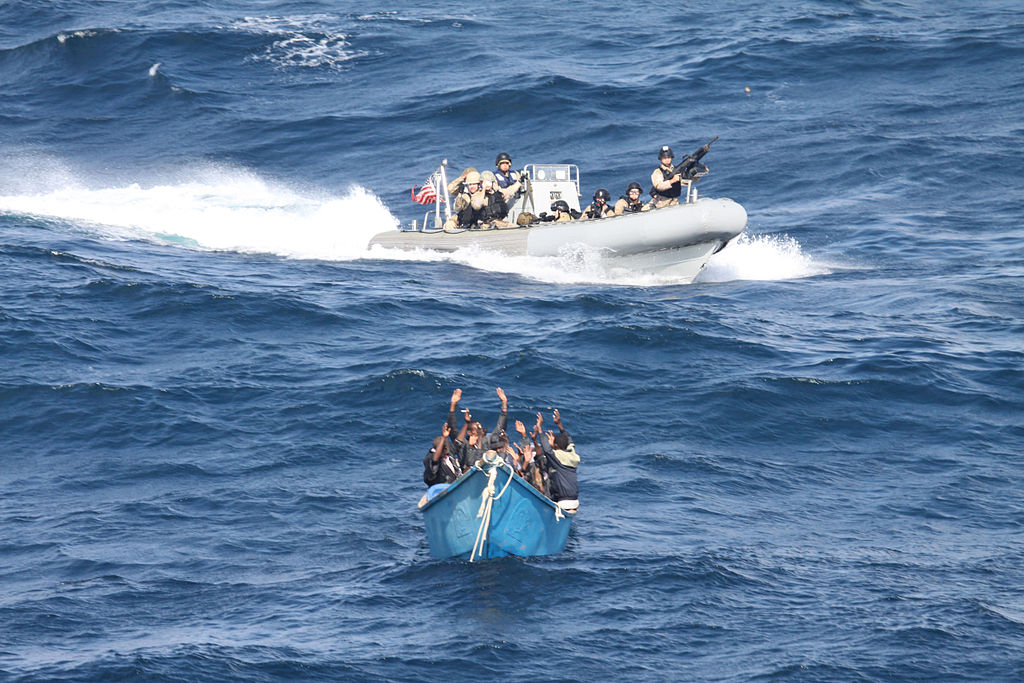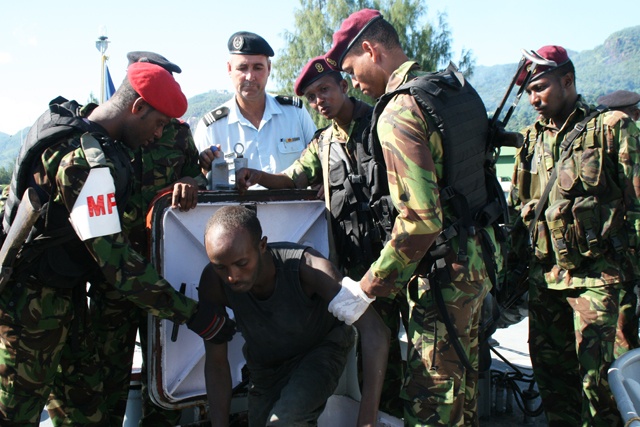Villages situated along the coast of the Gulf of Aden in Somalia often have to make hard choices: give pirates and their captives’ safe harbour in return for desperately-needed funds or continue to battle against drought, poverty and a severe lack of infrastructure.
An economist at King’s College London, Anja Shortland, and a sociologist at the University of Oxford, Federico Varese, published a paper arguing that building roads and ports there could allow desperately poor Somali clans the freedom to be able to choose legitimate trade over harbouring pirates, and finally beat the scourge of piracy for good.
The poverty-stricken country, situated on the Horn of Africa, is finally beginning to show signs of political and economic recovery after being ravaged by decades of civil war, militant uprisings and even a complete absence of central government.
But the semi-arid country, which contains only about 1.64 percent arable land but yet relies mainly on its exportation of livestock to Gulf states, faces a long period of rehabilitation as it tries to build a central bank that will direct monetary policy and bring together its shattered and war-weary people under a single leadership.
Although the Somali diaspora, which thrives in large communities in many countries since millions fled as refugees during long years of conflict, has long sent home pounds, dollars, euros, Kenyan shillings and South African rands via a robust network of money-senders, those left behind no longer want to survive on handouts; they are eager to see a Somalia with a thriving economy, a growing middle class and a better all-round standard of living.
In the late 1980s, the then-government of Somalia signed an agreement with two European companies which used the long, remote shoreline of Somalia as an illegal toxic waste dump site – ten million tonnes of waste in exchange for $80 million.
But after the December 2004 tsunami which battered the shores of northern Somalia, when nuclear waste was stirred up and brought to the shore, radiation sickness was reported in affected coastal communities – just one example of the high price the country’s poorest have had to pay for the greed and militancy of the leaders who were meant to protect them.
An interesting discovery
Researchers Shortland and Varese, who tracked the locations that hijacked ships were taken to between 2005 and 2012, discovered that pirates avoided large ports and local trading hubs when seeking a place to hide their ransomed cargoes and hostages.
“Our thought experiment shows that piracy is not an attractive revenue source. Most local elites refuse to protect pirates — just as mafias do not necessarily protect every kind of organized crime in their territory,” said the researchers in an article they wrote for the Washington Post.
 |
| A visit, board, search and seizure team from the guided-missile destroyer USS Pinckney (DDG 91) approaches a suspected pirate vessel after the Motor Vessel Nordic Apollo reported being under attack and fired upon by Somali pirates in the Gulf of Aden in December 2011 (U.S. Navy photo) Photo License: CC-BY 3.0 |
Hence, it is their belief that established trading communities, which gain regular income from tax from imports and exports, refuse to harbour pirates because trade is a safer and more lucrative source of revenue than taking a share in the uncertain returns of piracy. It is only the coastal clans which have no other source of income that offer the pirates protection in return for a share of the booty.
“The more trade opportunities, the stronger the anti-piracy stance — ranging from local anti-piracy demonstrations to punitive raids on pirates farther up the coast,” they continued. “Instead, the pirate anchorages are all located in arid regions well off the main sea trade routes. They have no connection to inland markets for their products, limiting their economic options to subsistence fishing and herding.”
When Saudi Arabia imposed a total ban on Somali livestock imports between 2000 and 2009, desperate clan leaders in the coastal state of Puntland, their income flows cut off almost entirely, began offering refuge to pirates. Soon after the ban was lifted, however, the pirates were hard put to find a place to hide, leading to a spike in arrests and prosecutions.
The mystical land of milk and honey
In ancient Egyptian times, the Land of Punt, thought to be located in present-day Somalia, was famed for producing and exporting gold, aromatic resins, blackwood, ebony, ivory and wild animals to the Egyptian kingdom.
Fast-forward to modern times and the realization is dawning that banditry on the high seas is not the only opportunity gained from being located in the Gulf of Aden, one of the world’s busiest shipping corridors. Somali traders have now increasingly begun to offer real competition to Australia's dominance over the Gulf Arab livestock market, offering quality animals at lower prices just a short distance away.
An estimated 43 percent of Somalis currently live on less than $1 a day, with only 24 percent of the population living in urban areas. Agriculture is therefore the most important economic sector of Somalia, with livestock accounting for about 65 percent of GDP and more than 50 percent of export earnings.
Perhaps the greatest battle is surviving the Jilal, the driest season of the year, and waiting for the rainy season to begin. Drought, faced without proper water infrastructure, could decimate livestock and bring the entire country to its knees once again.
Prevention better than cure
Since multilateral naval surveillance and interventions and the presence of heavily-armed guards on cargo ships began in the past few years, hijackings off the Somalian coast fell sharply, with only 15 incidents reported in 2013 in comparison to 75 in 2012 and 237 in 2011.
The Indian Ocean island nation of the Seychelles, geographically close to the Somali coast, has placed itself at the forefront of the fight against piracy, working with the United Kingdom and the European Union to apprehend and prosecute suspected pirates in the tiny island nation of 90,000 inhabitants.
The island country prosecuted the largest number of Somali pirates between 2009-2013. To date 124 pirates have been convicted. 23 are awaiting trial.
The awaiting-trial prisoners are taken to the Montagne Posée prison in the lush tropical mountains of the main inhabited island, Mahé, where they are kept separate from the local prisoners, tried at the Supreme Court in the capital city of Victoria and eventually repatriated back to Somalia upon conviction.
 |
| File photo: A Somali pirate, part of a group of 6 pirates caught at sea by the Seychelles defence forces after they had taken a Seychelles fishing boat hostage, 31 mars 2010 (Seychelles News Agency) Photo License: CC-BY |
However, researchers argue that measures such as these, although currently vital, are costly and fail to address the root causes of piracy, meaning that if they are not addressed, piracy will continue.
“Sea-based deterrence is working — but we still spend in the region of $3 billion a year on a problem that generated an annual revenue stream of just $50 million for Somalia in 2008-2012 — almost all of it on the high seas,” argue Shortland and Varese. “With the reduced level of attacks since 2012, the question arises whether private-sector vigilance will be relaxed and whether the current level of naval commitment is sustainable in the long run.”
International donors have already pledged around $1.5 billion to the reconstruction of Somalia in the past year alone, but Shortland argues that much of this should be allocated towards infrastructural development in the coastal areas where the pirates are active, instead of mostly on the capital city of Mogadishu.
As the researchers say, a road will not solve all aspects of maritime crime. However, they do believe that investment in infrastructure in remote areas will help to connect poor and cut-off areas that have been previously been recruitment grounds and havens for insurgents.
“We focus on where the pirates find protection and find that it is governed by simple economic self-interest. We would advocate a developmental solution based on infrastructure investment tying remote coastal communities into the wider Indian Ocean and regional economy. The former president of Puntland repeatedly asked for a road to his home town of Eyl. His supporters would have been more than compensated for giving up piracy revenue. We don’t need a ‘contract out of piracy’ — with the right incentives, self-interest will solve the problem.”
No comments:
Post a Comment